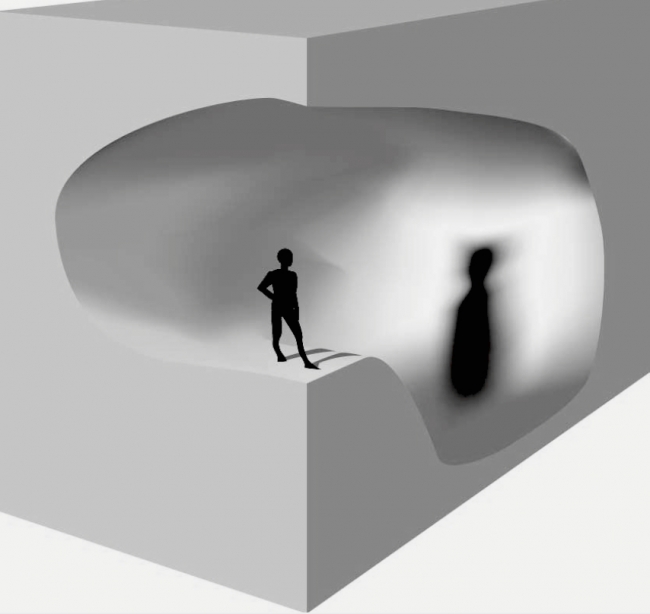
Borderline personality disorder (BPD) is still not completely understood by some mental health professionals. Moreover, there are several myths that surround ‘borderliners’ because of widespread ignorance about the illness. As a result, a harmful social stigma is usually attached to the illness and the isolation it forces often makes it more difficult for patients to cope with their condition. Treatment takes longer to show positive results, and sometimes it can have more harmful effects. The following myths are some of the most common misconceptions about the illness. If they are busted, it will be possible to create a more supportive environment for patients to sail through a swift recovery.
BPD is not a valid mental disorder
This is what some inexperienced psychiatrists believe. The truth is, BPD shows complex symptoms which include bipolar disorder, depression, post-traumatic stress disorder (PTSD), anxiety and ADHD, and can often confuse psychiatrists, especially if they do not have enough experience with it. But, things are changing for the better, and the disorder is more recognized today than it used to be, and it is possible for patients to get the correct diagnosis and treatment. It was officially included in the Diagnostic and Statistical Manual, an American Psychiatric Association publication, in 1980. Since then, research has shown that there is evidence of biological and genetic factors that increase the chances of developing the condition.
‘Borderliners’ are attention seekers with dangerous destructive tendencies
Based on a few reported cases, people with BPD are commonly believed to be attention seeking and destructive. However, most of the destruction is directed at themselves. It should be kept in mind that BPD causes impulsiveness and difficulty in coping with relationships. Self image and a sense of identity are skewed, and therefore it can lead to fears of rejection and other dysfunctional characteristics. This makes people vulnerable and they can react if they are provoked, but BPD should not be confused with Antisocial Personality Disorder.
This myth causes isolation and additional distress to sufferers. Instead of mistrust and isolation, what they need is a strong support system that will help them to recover from their condition.
My child cannot be diagnosed with BPD
This is not true, adolescents (and children) can be diagnosed with the disorder. The myth arises from the fact that adolescents are still growing into their personalities and therefore will have similar characteristics as some BPD symptoms. The Fourth Edition of the Diagnostic Statistical Manual (DSM IV) therefore lays out clear guidelines on the basis of which the disorder should be diagnosed. In adolescents, diagnosis must be made with careful reference to these conditions. Early intervention can help to get the patient the help that he/she needs in a timely way.
BPD is a kind of bipolar disorder
Patients suffering from bipolar disorder may display similar symptoms as a patient suffering from BPD. However, they are two completely distinct disorders, and they do not usually exist together. A BPD patient may suffer from bipolar disorder (and vice versa), but it does not necessarily make them more vulnerable to it than the general populace. The medication that is used to treat bipolar disorder may also be the same as that used for BPD. Yet the two disorders are distinct from the perspective of symptoms.
However, in modern research, there is no compelling evidence to prove either that the two disorders are linked or that they are not. Researchers at this point believe that there may be a specific sub-group of BPD patients in whom risk genes for bipolar disorder may make them more vulnerable to a combined presence of both illnesses.
I know someone with BPD, so I know the symptoms
There is no single set of symptoms that a BPD patient is likely to display, therefore you cannot know one patient to be able to recognize the illness in others. There are 9 possible symptoms, of which the presence of any 5 will be enough to cause a person to be diagnosed with BPD. Therefore, there are 256 possible combinations of the criteria that a patient may have. It is easy to find two people with BPD sharing only a single symptom.
Moreover, people experience the same symptoms in different ways. Because of its subjective nature, one patient may reveal a different sense of identity loss to another patient.
Only women develop this disorder
BPD is found in both men and women, as is revealed by latest researches. Only 25 percent of patients diagnosed with BPD are men, therefore women are found to be two to three times more likely to suffer from the illness than men. However, the number of male sufferers are also significant. The symptoms that men experience may be different from those that women experience. The one characteristic that marks the illness, and is found in both men and women patients, is the instability in interpersonal relationships, impulsiveness and self image issues, as stated in the DMV IV.
The problem with this myth is that it increases the stigma that is associated with the disease in women, and in many cases makes it difficult for women to receive treatment for it and they continue to suffer. It is therefore even less accepted by men as a valid illness.
Medication cannot do much for me
This is a myth that was caused due to the early belief that BPD is caused by environmental factors, and therefore cannot be treated with medication. In addition to this, people also believe that medication may lead to unrealistic expectations of recovery in patients and this can slow down the course of treatment.
Clinical research and experience has shown however that medication may be able to treat many of your symptoms effectively, especially if you have a moderate or severe form of the condition. Brain scans of patients have shown severe biological brain disturbances. Medication can treat that. Once your symptoms are checked, you can participate more easily in the psychotherapy sessions that will help you to speed up on your road to recovery.
Bringing my family into the process of my therapy can have a negative effect
Some research has shown that family involvement in the treatment of BPD can help rather than hinder. Usually doctor-patient confidentiality is maintained for psychiatric disorders, except in schizophrenia and BPD, amongst others. It is very important that your family is trained to be able to cope with your condition. This will speed up your recovery. Moreover, as your illness makes you vulnerable to unstable relationships, you need a strong support system from loved ones, and this myth can be particularly harmful if it is accepted.
In fact, lack of response or any communication on your issues will only cause distress to your family, as they finance your treatment and provide you with moral support. Therefore, it is important for your loved ones to enroll in one of the many family training programs available for patients with BPD.
Dialectical behavior therapy is the only thing that will work for me
Most people believe that dialectical behavior therapy is the most effective form of psychotherapy for BPD. This is a harmful exaggeration of the positive results that the treatment has had with some patients. It is true that DBT has been effective for many patients that didn’t respond to their usual treatments. It is usually the severely suicidal or self-destructive patients who ask for hospital care that benefit most from DBT.
However, in your search for DBT therapists, do not ignore other forms of treatment. BPD is a complex disorder, and it is not possible to find a simple treatment that can effectively cure the condition in all patients.
There is no cure for my disorder
This is not true. Borderline personality disorder is treatable today, though the length of time that the treatment can bring about a cure depends on many things. Just because you have been diagnosed with BPD does not mean that you have to live with it forever. The key is to finding the right treatment for you, and then working hard to make the best use of it. Treatments include medication, many forms of psychotherapy and self help. Hospitalization and intensive care is also available for severe cases. Have reasonable expectations, find the perfect balance of treatments for you, and you can work to root the illness out of your life.
Only victims of child abuse suffer from borderline personality disorder
Child abuse is one of the causes that have been linked to BPD, but by no means have all BPD patients been victims of child abuse. Some patients may have suffered physical, verbal or sexual abuse as children.
The causes of BPD are as yet unknown. It is different for each person, but it is usually a combination of environmental and biological factors. Also, the term ‘abusive’ is a matter of perception. Therefore, the environmental contribution can possibly be dependent on the person’s point of view: a childhood with no abuse may still have been seen as abusive by the patient.



